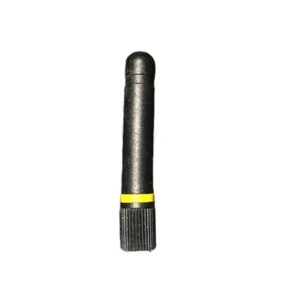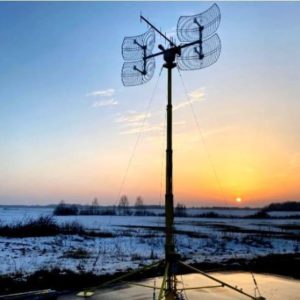No products in the cart.
Drone Antennas
Showing all 3 results
Filters Sort results
Reset Apply
Replace a lost or stolen antenna on any Eclipse model with this spare part. This part goes on the aircraft, not on the ground. Last Updated: 28-06-2022 | ||
Pan & tilt precise positioning, Configurable height tripod, Detachable & easy to carry, Yagi, patch & parabolic antennas, Integrated directional y omnidirectional antenna Last Updated: 14-03-2022 | ||
Our antenna tracker maximizes radio communication range between your drone & the ground control station & therefore allows to use of the maximum potential of the data link. It uses the drone position information to accurately orient the antenna in the UAV direction. It’s necessary to have precision tracking systems when seeking to operate over long distances, which makes antennas a fundamental component. Last Updated: 06-04-2022 |
Drone Antennas on AvPay
AvPay has a range of UAV Antennas For Sale in the US, Europe, Australia, South Africa and throughout the world. Contact Drone Equipment Sellers directly on AvPay to compare prices through the Aviation Directories here: https://avpay.aero/directory/
AvPay is a global aviation marketplace that lets you browse a wide selection of Drone Antennas For Sale. View all of our Drone Equipment Listings and discover other related Aviation Products & Services here: https://avpay.aero/marketplace/
Can’t find the UAV Antenna you’re looking for? Check-out the Aviation Directories to find an Aviation Company that offers the service you’re looking for: https://avpay.aero/directory/
AvPay: Connecting Drone Pilots with Drone Equipment Sellers Worldwide!
The range of a drone’s antenna refers to the maximum distance at which the drone can maintain a reliable and stable connection between the remote controller and the drone itself. The range is influenced by various factors, including the type of drone, the quality and power of the antenna, environmental conditions, and any obstructions in the signal path. To determine the range of a drone antenna, it’s essential to refer to the manufacturer’s specifications and guidelines provided with the drone. Manufacturers typically provide an estimated range based on ideal conditions, which may vary for different models. The range can be affected by factors such as the frequency band used (e.g., 2.4 GHz or 5.8 GHz), signal interference from other devices, presence of obstacles, and electromagnetic interference in the surrounding area. If you fly your drone outside of the antenna’s range and the signal connection weakens or is lost, there are a few actions you can take. If you notice the signal weakening or experiencing intermittent connection, it’s important to bring the drone back within the range of the antenna. Flying beyond the range can lead to loss of control and potential accidents. In some cases, adjusting the orientation of the remote controller’s antenna or the drone’s antenna can help optimize signal reception. Orienting the antennas for better line-of-sight and minimizing obstructions can improve signal strength and extend the range. Signal interference from other devices or sources can impact the drone’s range. Avoid flying in areas with high levels of electromagnetic interference, such as near power lines, radio towers, or crowded Wi-Fi networks. Additionally, turning off or moving away from other electronic devices that may cause interference can help maintain a stable connection. Signal boosters or range extenders are accessories that can enhance the signal strength and extend the range of the drone’s antenna. These devices work by amplifying the signal between the remote controller and the drone, potentially allowing for a longer operating distance. It’s important to choose a compatible range extender designed for your specific drone model. Open areas with clear line-of-sight, minimal interference, and fewer obstructions are ideal for maximizing the range of the drone’s antenna. Flying in open spaces, away from buildings, trees, and other potential signal blockers, can help maintain a strong and stable connection. It’s crucial to note that flying a drone beyond the manufacturer’s recommended range is generally not advised. Doing so can result in loss of control, potential crashes, and violation of regulatory requirements. Always ensure that you are familiar with your drone’s capabilities, adhere to local regulations, and prioritize safe and responsible drone flying practices.







